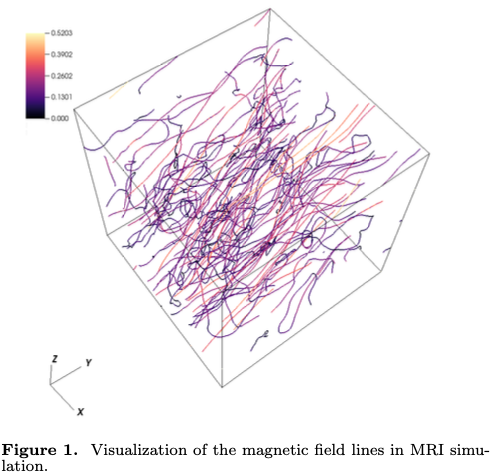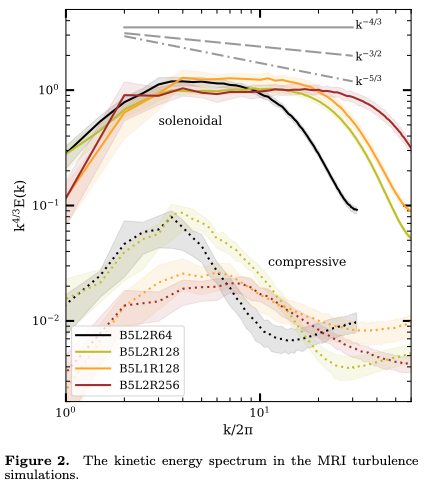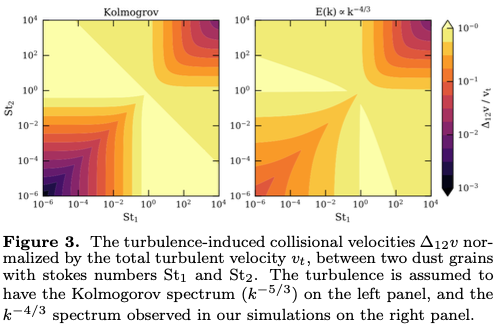Impact of magneto-rotational instability on grain growth in protoplanetary disks
- Max Planck Institute for Extraterrestrial Physics, Garching by Munich, Germany (munan@mpe.mpg.de)
Grain growth in protoplanetary disks is the first step towards planet formation. One of the most important pieces in the grain growth model is calculating the collisional velocity between two grains induced by the turbulent motion of the gas. The collisional velocities in previous works are obtained based on the assumption that the turbulence is hydrodynamic with the Kolmogorov power spectrum. However, realistic protoplanetary disks are magnetized, and turbulent motions can be induced by the magneto-rotational instabilities (MRI).
To understand the impact of MRI turbulence on grain growth, we carry out 3D MHD simulations of the MRI as well as driven turbulence, for a range of physical and numerical parameters. Figure 1 illustrates the magnetic field structure in one of the MRI simulations. We investigate two fundamental parameters of the turbulence that can have large impacts on grain collision velocities, the kinetic energy spectrum and the turbulence autocorrelation time.
We find that the convergence of the turbulence α-parameter does not necessarily imply the convergence of the energy spectrum. The MRI turbulence is largely solenoidal, for which we observe a persistent kinetic energy spectrum with a -4/3 slope, shallower than the -5/3 slope in the Kolmogorov turbulence (Figure 2). The same is obtained for solenoidal driven turbulence with and without magnetic field, over more than 1 dex near the dissipation scale. This power-law slope appears to be converged in terms of numerical resolution, and to be due to the bottleneck effect. The kinetic energy in the MRI turbulence peaks at the fastest growing mode of the MRI. In contrast, the magnetic energy peaks at the dissipation scale. The magnetic energy spectrum in the MRI turbulence does not show a clear power-law range, and is almost constant over approximately 1 dex near the dissipation scale. The turbulence autocorrelation time is nearly constant at large scales, limited by the shearing timescale, and shows a power-law drop at small scales, with a slope close to -1, steeper than that of the eddy crossing time.
The deviation from the standard picture of the Kolmogorov turbulence can have a significant impact on the grain collisional velocities. Figure 3 shows the collisional velocities in Kolmogorov turbulence and turbulence observed in the simulations. For small grains that are well coupled to the gas, the collisional velocities can vary by orders of magnitude across different turbulence models. To understand the dust growth in protoplanetary disks, better computational techniques are needed to achieve the large dynamical range necessary for resolving the turbulence spectrum in the future.
Reference:
Gong M., Ivlev A. V., Zhao B., Caselli P., 2020, ApJ, 891, 172



How to cite: Gong, M., Ivlev, A., Zhao, B., and Caselli, P.: Impact of magneto-rotational instability on grain growth in protoplanetary disks, Europlanet Science Congress 2020, online, 21 September–9 Oct 2020, EPSC2020-316, https://doi.org/10.5194/epsc2020-316, 2020

